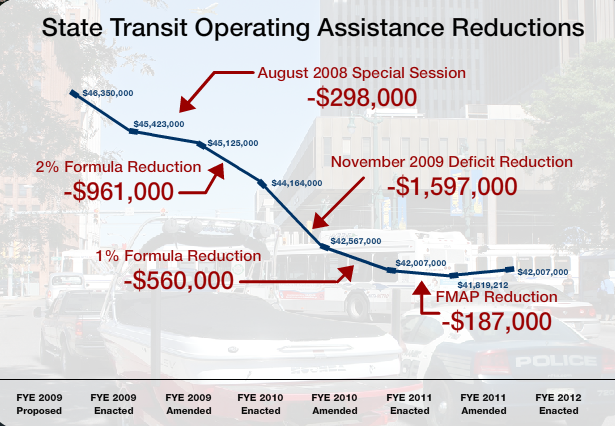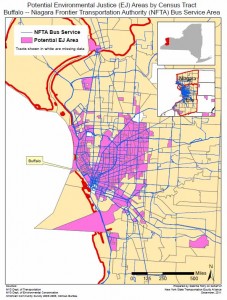Yesterday, the commissioners of the Niagara Frontier Transportation Authority (NFTA) formally adopted a plan to cut 22% of service miles from their Metro transit system.
 These cuts attempt to address NFTA’s $7.1 million budget shortfall, which stems from increased operating costs and reduced funding from Albany (money that’s known as State Operating Assistance, or STOA). Since 2009, Buffalo has seen a $3.6 million reduction in STOA and a $7 million increase in operating costs, and they’re not the only transit system in the state that’s suffered from these cutbacks.
These cuts attempt to address NFTA’s $7.1 million budget shortfall, which stems from increased operating costs and reduced funding from Albany (money that’s known as State Operating Assistance, or STOA). Since 2009, Buffalo has seen a $3.6 million reduction in STOA and a $7 million increase in operating costs, and they’re not the only transit system in the state that’s suffered from these cutbacks.
NFTA, like many transit systems, isn’t scaling back service because people aren’t taking the bus. With 27 million annual passengers and over 1,600 employees, it’s the second largest transit provider in the state. Approximately 84% of metro riders use the system to get to work, and 77% of these don’t own a car. As a coalition of advocates noted last week, this means that these cuts “will undermine all other efforts to spur economic development in our region—even if we create jobs, people won’t be able to get to them.”

In a city with the 3rd highest poverty rate in the country, these cuts will deeply constrain access to economic recoveryfor many low-income Buffalonians. Additionally, as America’s 6th most segregated city, these cuts will also likely create a heavy burden on people of color who use the system. As many vulnerable communities are concentrated near transit hubs, reductions in service will impair their ability to access their jobs. Riders who “reverse commute” from inner urban areas out to jobs in the suburbs will also be negatively affected as many of these routes will be cut.
Faced with this hard reality—an economically vital transit system that can’t make ends meet—NFTA has requested $10 million from Albany during the 2012-13 fiscal year. They also requested eight megawatts of low-cost power from the New York Power Authority, which would provide $1.8 million in annual operating savings. Buffalo officials have been joined by Erie County and New York State legislators in their calls for help from Governor Cuomo. NYSTEA and several other advocacy organizations have joined this fight.
The situation is dire. Unless NFTA gets more funding, it will have few choices beyond cutting routes and raising fares. Across New York, transportation authorities are implementing cost saving measures, but they can only fasten their belts so much before they cut off circulation entirely.
To help NFTA and other New York transit agencies stay alive, demand that Albany stand up for transit.


 0 Comments
0 Comments  Print
Print
 Email
Email